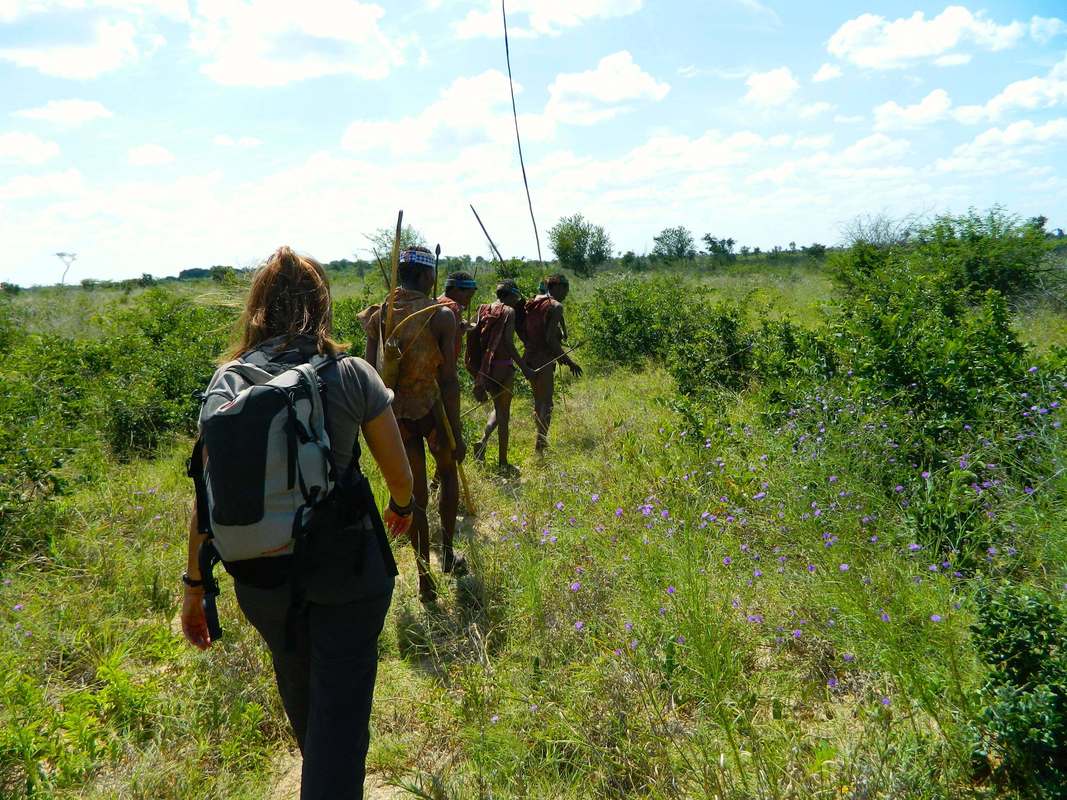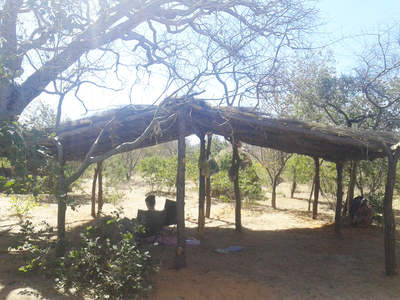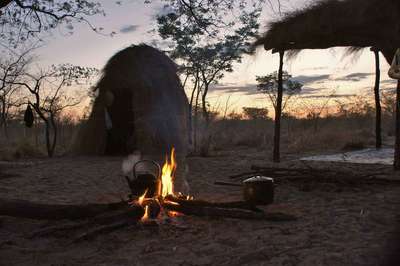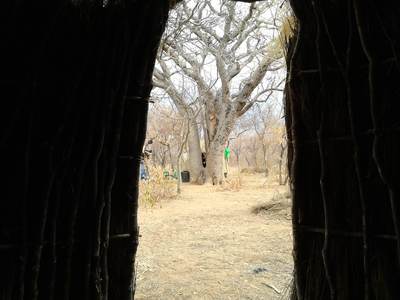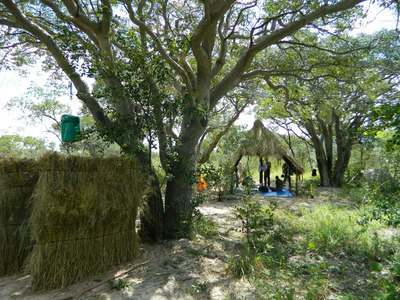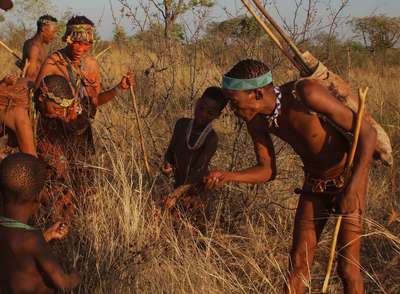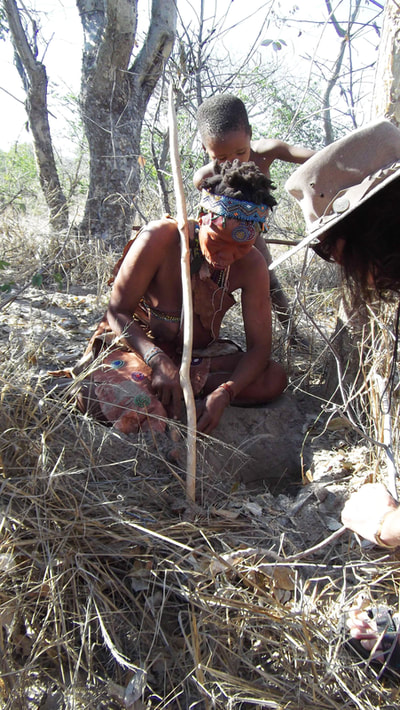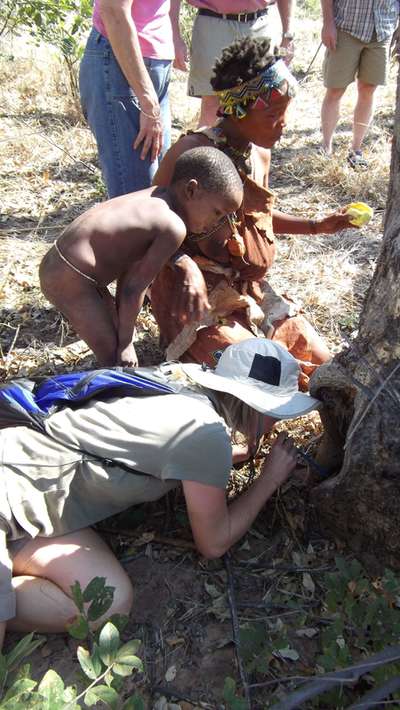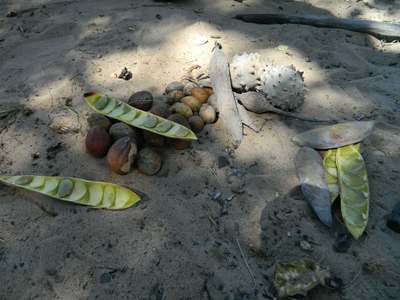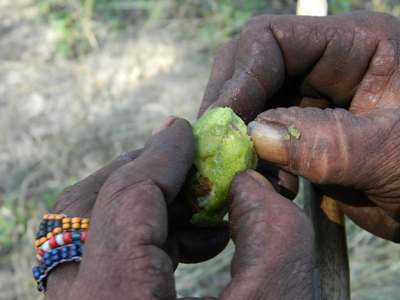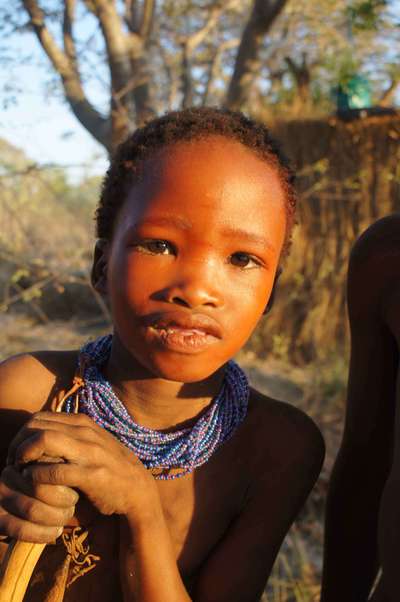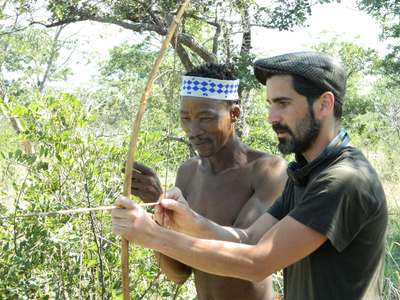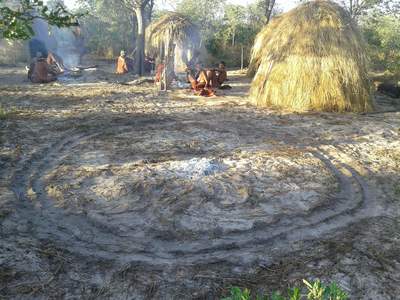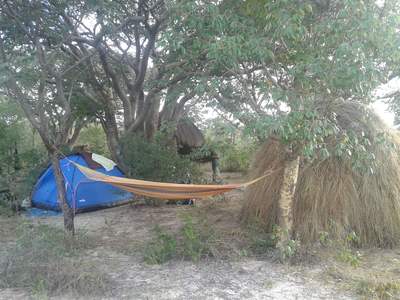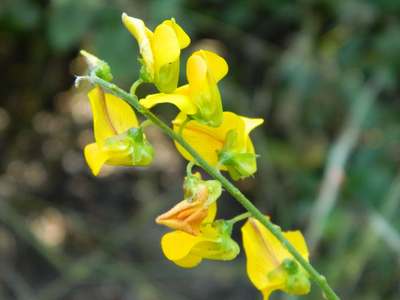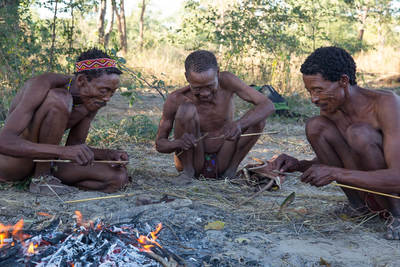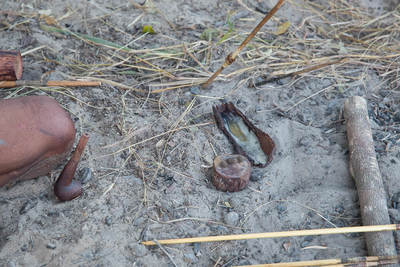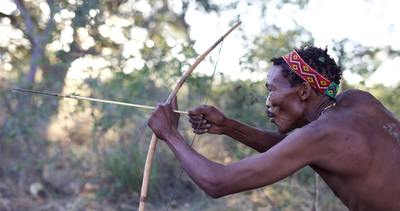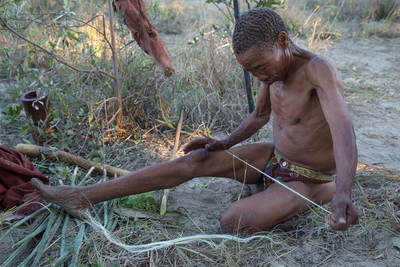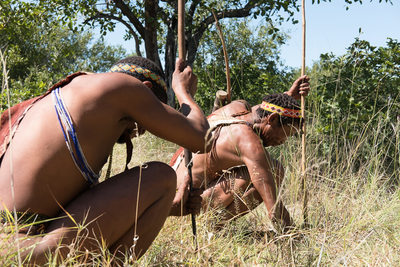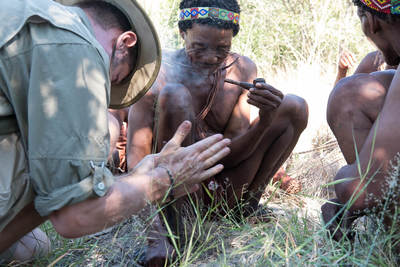Undeveloped wilderness terrain and the unique traditional culture of the Kalahari's human inhabitants, in particular the San (Bushmen / Basarwa), are two powerful and mutually complementary attributes of immense potential interest to regional and international adventure-seeking eco-tourists. The San have occupied the Kalahari for at least 30,000 years and they understand its ecological dynamics intimately.
From a tourist perspective - experienced in the presence of its oldest inhabitants - the Kalahari is transformed from a seemingly featureless, monotonous landscape into a fascinating, life-sustaining and species-rich wonderland. Therefore, not only is the cultural and human dimension enriching in its own right - it also amplifies tourist's ecological experiential value and is a powerful catalyst for self-reflection and for deepening their understanding of their own environmental and socio-economic context.
An increasing number of new and repeat tourists to Botswana are now seeking more authentic, "wild" experiences than those currently available at luxury lodges and on the established tourist circuits in the already saturated commercial tourism areas centred in and around the Okavango Delta. Whilst visitors are confined by the current product offerings focussed around popular destinations, vast tracts of Kalahari wilderness off the "beaten track" remain largely untapped as a resource catering to the emerging tourist market demands.
Low-impact wilderness / cultural tourism has the potential to impact positively on community livelihoods throughout the wildlife dispersal areas - especially in those remote, water-less areas with relatively poor 'game-viewing' potential, where developing fixed-lodge type operations may be too impractical and costly.
Promoting sustainable, ecologically and culturally sensitive tourism enterprises in the so called "marginal areas" is essential to:
1) Promoting sustainable land usage which does not degrade the resource base on which people depend;
2) Rehabilitating wildlife populations towards their full ecological and economic potential;
3) Preserving cultural heritage and traditional ecological knowledge; and
4) Assisting the Botswana Government in eradicating poverty and in expanding and diversifying its tourism industry.
From a tourist perspective - experienced in the presence of its oldest inhabitants - the Kalahari is transformed from a seemingly featureless, monotonous landscape into a fascinating, life-sustaining and species-rich wonderland. Therefore, not only is the cultural and human dimension enriching in its own right - it also amplifies tourist's ecological experiential value and is a powerful catalyst for self-reflection and for deepening their understanding of their own environmental and socio-economic context.
An increasing number of new and repeat tourists to Botswana are now seeking more authentic, "wild" experiences than those currently available at luxury lodges and on the established tourist circuits in the already saturated commercial tourism areas centred in and around the Okavango Delta. Whilst visitors are confined by the current product offerings focussed around popular destinations, vast tracts of Kalahari wilderness off the "beaten track" remain largely untapped as a resource catering to the emerging tourist market demands.
Low-impact wilderness / cultural tourism has the potential to impact positively on community livelihoods throughout the wildlife dispersal areas - especially in those remote, water-less areas with relatively poor 'game-viewing' potential, where developing fixed-lodge type operations may be too impractical and costly.
Promoting sustainable, ecologically and culturally sensitive tourism enterprises in the so called "marginal areas" is essential to:
1) Promoting sustainable land usage which does not degrade the resource base on which people depend;
2) Rehabilitating wildlife populations towards their full ecological and economic potential;
3) Preserving cultural heritage and traditional ecological knowledge; and
4) Assisting the Botswana Government in eradicating poverty and in expanding and diversifying its tourism industry.
Cognizant of the need for change, we have - since 2010 and long before the formation of the KWT - been working closely with remote communities in Western Ngamiland in piloting a unique, low-impact form of wilderness-based cultural tourism that can be implemented on a low-cost basis, without the need to develop boreholes to sustain tourism activities (extremely expensive) and in areas lacking potable groundwater resources.
The project has already impacted positively on the target communities and surrounding habitat by encouraging the protection of wildlife, traditional culture and knowledge, and generating much needed income from training and project development activities. No costly infrastructural, accommodation and borehole development interventions were required in setting up the initiative, which utilizes biodegradable traditional structures, portable rainwater harvesting for water supplies, and deliberately excludes vehicles and other artificial intrusions where possible from the visitor's experience. Product trials have established its market potential and the Trustees in their private capacity will be assisting with the marketing and management once fully operational.
The communities also plan to link in other surrounding traditional land areas to create a vast community owned unfenced wildlife conservancy of 45,000 ha in extent. This inspired bigger vision will help to secure important wild plant food supplies, rehabilitate migratory wildlife, and preserve traditional knowledge and skills. It will also pave the way for the possible transboundary expansion of the existing wildlife dispersal area into Namibia under the KAZA initiative.
Through our work we plan to replicate this model in other remote areas in Botswana for poverty alleviation and wildlife conservation purposes, and also to facilitate in parallel to that, the development of more conventional forms of tourism in adjacent populated areas.
The KWT is seeking funding to assist other communities in developing viable resource management and tourism enterprise plans, to help market and operate these enterprises, develop infrastructure where appropriate, and undertake the necessary authorization procedures, which are time-consuming and otherwise out of reach to the beneficiaries due to the paperwork and costs involved.
The project has already impacted positively on the target communities and surrounding habitat by encouraging the protection of wildlife, traditional culture and knowledge, and generating much needed income from training and project development activities. No costly infrastructural, accommodation and borehole development interventions were required in setting up the initiative, which utilizes biodegradable traditional structures, portable rainwater harvesting for water supplies, and deliberately excludes vehicles and other artificial intrusions where possible from the visitor's experience. Product trials have established its market potential and the Trustees in their private capacity will be assisting with the marketing and management once fully operational.
The communities also plan to link in other surrounding traditional land areas to create a vast community owned unfenced wildlife conservancy of 45,000 ha in extent. This inspired bigger vision will help to secure important wild plant food supplies, rehabilitate migratory wildlife, and preserve traditional knowledge and skills. It will also pave the way for the possible transboundary expansion of the existing wildlife dispersal area into Namibia under the KAZA initiative.
Through our work we plan to replicate this model in other remote areas in Botswana for poverty alleviation and wildlife conservation purposes, and also to facilitate in parallel to that, the development of more conventional forms of tourism in adjacent populated areas.
The KWT is seeking funding to assist other communities in developing viable resource management and tourism enterprise plans, to help market and operate these enterprises, develop infrastructure where appropriate, and undertake the necessary authorization procedures, which are time-consuming and otherwise out of reach to the beneficiaries due to the paperwork and costs involved.
